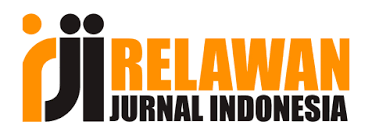Digital Diplomacy As An Instrument Of Advancing Us Interests In Central Asia
Keywords:
United States, Digital Diplomacy, Central Asia, Information Technologies, Information And Communication Technologies, Foreign Policy, InterestAbstract
This study examines the strategic use of digital diplomacy by the United States to advance its foreign policy interests in Central Asia. While digital diplomacy is increasingly recognized as a powerful tool for influencing global audiences, there remains a gap in understanding its specific impact in geopolitically sensitive regions like Central Asia. Through a qualitative analysis of secondary data sources, including government reports and digital platforms, the research identifies key areas where U.S. digital diplomacy has been effective—such as strengthening regional sovereignty, ensuring security, supporting media development, promoting human rights, and fostering a positive U.S. image. The findings suggest that the U.S. successfully leverages its technological prowess to maintain and enhance its influence in Central Asia, with implications for future diplomatic strategies in the digital age.
References
D. Chernobrov, “Strategic humour: Public diplomacy and comic framing of foreign policy issues,” Br. J. Polit. Int. Relations, vol. 24, no. 2, pp. 277–296, 2022, doi: 10.1177/13691481211023958.
R. Adler-Nissen, “Blended Diplomacy: The Entanglement and Contestation of Digital Technologies in Everyday Diplomatic Practice,” Eur. J. Int. Relations, vol. 28, no. 3, pp. 640–666, 2022, doi: 10.1177/13540661221107837.
E. Hedling, “Practice Approaches to the Digital Transformations of Diplomacy: Toward a New Research Agenda,” Int. Stud. Rev., vol. 23, no. 4, pp. 1595–1618, 2021, doi: 10.1093/isr/viab027.
A. Ibáñez, “Dementia caregiving across Latin America and the Caribbean and brain health diplomacy,” Lancet Heal. Longev., vol. 2, no. 4, 2021, doi: 10.1016/S2666-7568(21)00031-3.
K. A. Eggeling, “The Synthetic Situation in Diplomacy: Scopic Media and the Digital Mediation of Estrangement,” Glob. Stud. Q., vol. 1, no. 2, 2021, doi: 10.1093/isagsq/ksab005.
Z. A. Huang, “Exploring China’s Digitalization of Public Diplomacy on Weibo and Twitter: A Case Study of the U.S.–China Trade War,” Int. J. Commun., vol. 15, pp. 1912–1939, 2021.
D. Ingenhoff, “Key Influencers in Public Diplomacy 2.0: A Country-Based Social Network Analysis,” Soc. Media Soc., vol. 7, no. 1, 2021, doi: 10.1177/2056305120981053.
M. A. Khan, “Reducing the Threat of Cyber Warfare Through a Suitable Dispute Resolution Mechanism,” Law J. Univ. Latv., vol. 2020, no. 13, pp. 97–120, 2020, doi: 10.22364/jull.13.06.
L. Di Martino, “Conceptualising public diplomacy listening on social media,” Place Brand. Public Dipl., vol. 16, no. 2, pp. 131–142, 2020, doi: 10.1057/s41254-019-00135-5.
CENTRAL ASIA MEDIA PROGRAM. https://www.usaid.gov/central-asia-regional/fact-sheets/central-asia-media-program
Seib, P. (2012). Real-time diplomacy: Politics and power in the social media era. New York, NY: Palgrave Macmillan.
Seib, P. (2016). The future of diplomacy. Cambridge: Polity Pres
Sengupta, S. (2013, October). New diplomatic avenue emerges, in 140-character bursts. The New York Times. Retrieved from https://www.nytimes.com/2013/10/04/world/new-diplomatic-avenue-emerges-in-140-character-bursts.html.
Slaughter, A. M. (2009). America’s edge: Power in the networked century. Foreign Affairs, 88(1) 94–113.
Slaughter, A. M. (2017). The chessboard and the web: Strategies of connection in a networked world. New Haven, CT: Yale University Press.
Tim Ryan. “Media’s Coverage Has Distorted World’s View of Iraqi Reality,” WorldTribune.com, January 18, 2005.
The history of the neweurasia.net blogging platform initiative is available at http://www.neweurasia.net/history
Technology and Public Purpose Project: 5G, Deepfakes, Quantum Computing, Synthetic Biology / Belfer Center for Science and International Relations at Harvard Kennedy School. 2020. URL: https://www.belfercenter.org/project/technology-and-public-purpose
Wimmer, A. (2019). Why nationalism works—And why it isn’t going away. Foreign Affairs, 98(2), 27–34.

















